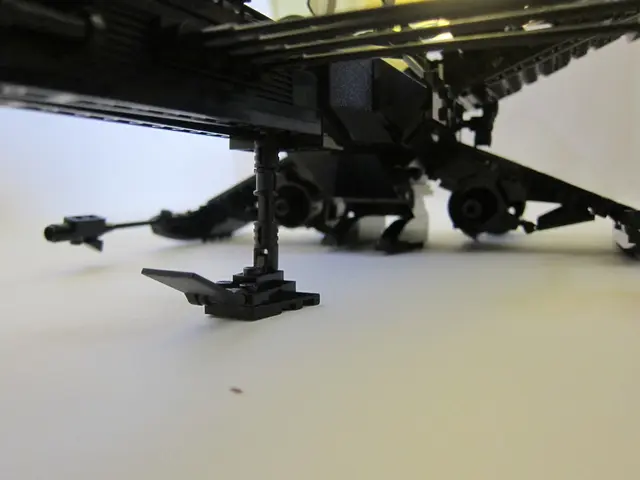Artificial Intelligence in Dresden: Developing Emotional Capabilities for Robots
In the realm of technology and science, the Fraunhofer Institute for Material and Beam Technology IWS in Dresden is at the forefront of groundbreaking research and development. One of their latest projects, Nature4Nature, is a testament to this, demonstrating the ongoing collaboration with industry and research partners.
The Nature4Nature project is a significant step forward in bionics, a field that involves the technological imitation and further development of biological principles. This project focuses on preventing microplastics from being released into natural water cycles and ultimately into the world's oceans. The researchers have been inspired by the ability of certain rays and paddlefish, as well as other suspension feeders in the oceans, to filter out microplastics effectively.
In another fascinating development inspired by nature, the BioGrip project is underway at Fraunhofer IWS. This project aims to create robots with feelings, using sensors to enable flexible grippers from 3D printers to grasp just tightly enough to avoid damaging humans or objects. The technology developed could simulate other functions of the human hand, such as estimating the weight of an object.
The approach behind the development of feeling robots is called 'Bionics,' which involves the technological imitation and further development of biological principles. In the BioGrip project, researchers are working on a technology that mimics the movement of fish fins to gently grasp objects, using several 3D printing processes and special silver sensors that provide the necessary feelings in the fingers and react to touches, pressure, and curvature.
The Nature4Nature project is one of the various future applications of bionics, which includes feeling robots, autonomous rovers, and harvesting robots. For instance, these robots could be used in agriculture to pick strawberries without squashing them, in space exploration to safely collect unknown samples on Mars or in the deep sea, and in marine environments to collect sea creatures like sea urchins without injuring them.
In addition to the development of feeling robots, the Nature4Nature project also involves the creation of innovative filters to prevent wastewater treatment plants from releasing microplastics into natural water cycles. However, no specific information about the innovations in water purification developed at the Fraunhofer Institute for Material and Beam Technology IWS or the researchers involved in the Nature4Nature project was found in the provided search results.
Fraunhofer IWS is also developing laser systems that engrave Lotus effects and other natural tricks for repelling dirt, ice, or friction as fine patterns on surfaces. These advancements highlight the institute's commitment to creating technology that mimics and improves upon nature's designs.
In conclusion, the research and development at the Fraunhofer Institute for Material and Beam Technology IWS are shaping the future of technology, with projects like Nature4Nature and BioGrip pushing the boundaries of what is possible in bionics. These projects demonstrate the potential for technology to mimic and improve upon nature's designs, leading to a diverse range of applications that could revolutionise various industries.
Read also:
- Conflict Erupts Between Musk and Apple Over Apple Store's Neglect of Grok
- Iberdrola embraces AI technology for strengthening electrical grid durability
- SpaceX and xAI Garnering Multi-Billion Dollar Agreements: Major Achievements in Valuation
- AI company Dataloop collaborates with Qualcomm to enhance AI model creation








